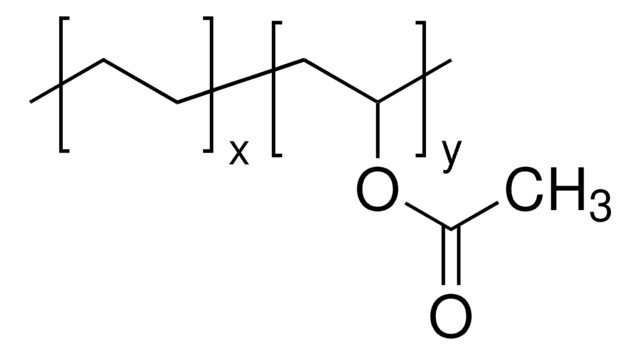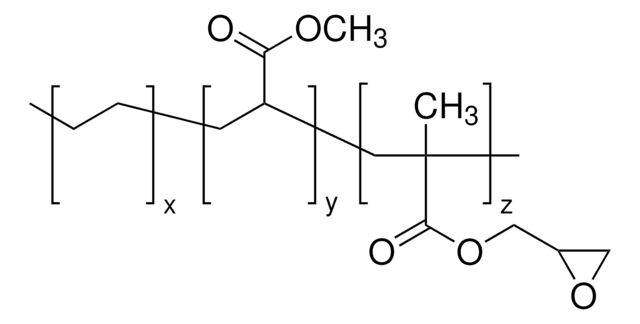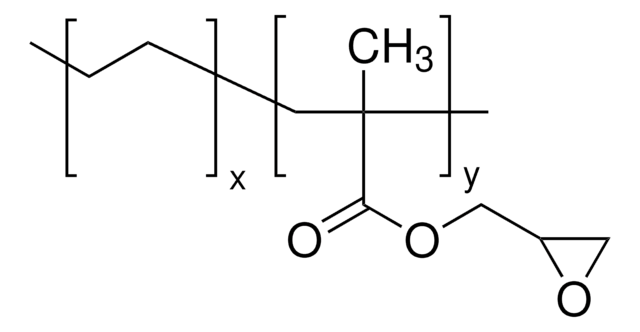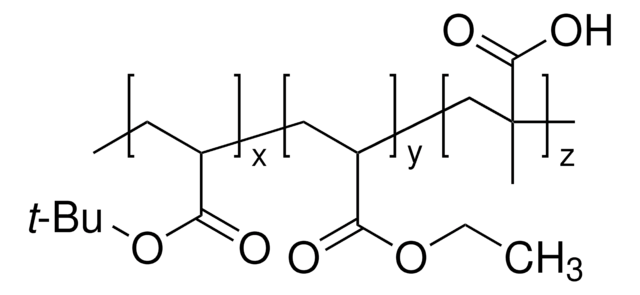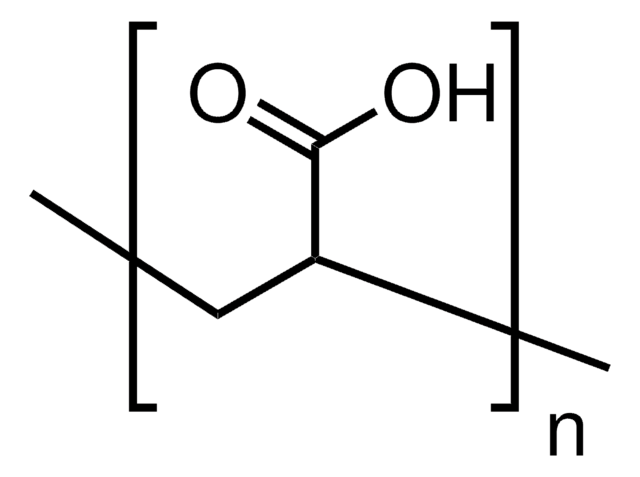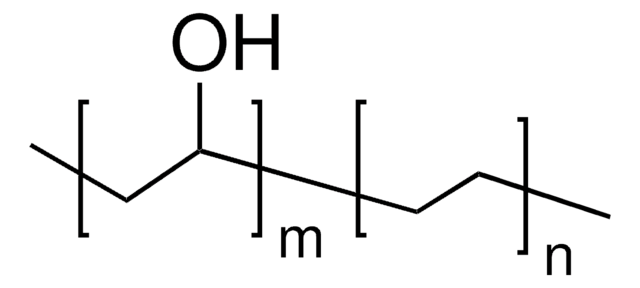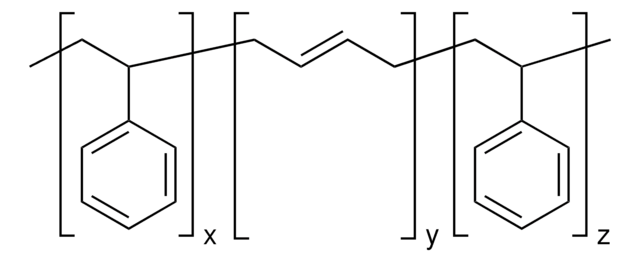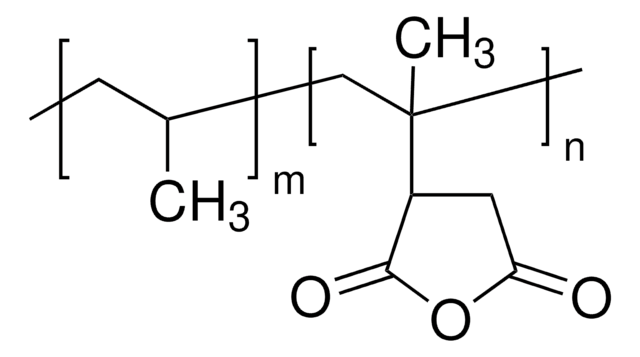Wichtige Dokumente
426717
Poly(ethylen-co-acrylsäure)
acrylic acid 5 wt. %, beads
About This Item
Empfohlene Produkte
Beschreibung
drop point 105 °C Mettler
Qualitätsniveau
Form
beads
Zusammensetzung
acrylic acid, 5 wt. %
Härte
≤2.5 dmm (ASTM D 5, 25 °C)
Viskosität
575 cP(145 °C, Brookfield)(lit.)
Säurezahl
37‑44 mg KOH/g
Übergangstemp.
Tm 99-101 °C
Dichte
0.93 g/mL at 25 °C
SMILES String
C=C.OC(=O)C=C
InChI
1S/C3H4O2.C2H4/c1-2-3(4)5;1-2/h2H,1H2,(H,4,5);1-2H2
InChIKey
QHZOMAXECYYXGP-UHFFFAOYSA-N
Suchen Sie nach ähnlichen Produkten? Aufrufen Leitfaden zum Produktvergleich
Verwandte Kategorien
Anwendung
Leistungsmerkmale und Vorteile
Signalwort
Danger
H-Sätze
Gefahreneinstufungen
Aquatic Chronic 3 - Eye Dam. 1 - Skin Corr. 1A - STOT SE 3
Zielorgane
Respiratory system
Lagerklassenschlüssel
8A - Combustible corrosive hazardous materials
WGK
WGK 3
Flammpunkt (°F)
Not applicable
Flammpunkt (°C)
Not applicable
Hier finden Sie alle aktuellen Versionen:
Besitzen Sie dieses Produkt bereits?
In der Dokumentenbibliothek finden Sie die Dokumentation zu den Produkten, die Sie kürzlich erworben haben.
Unser Team von Wissenschaftlern verfügt über Erfahrung in allen Forschungsbereichen einschließlich Life Science, Materialwissenschaften, chemischer Synthese, Chromatographie, Analytik und vielen mehr..
Setzen Sie sich mit dem technischen Dienst in Verbindung.